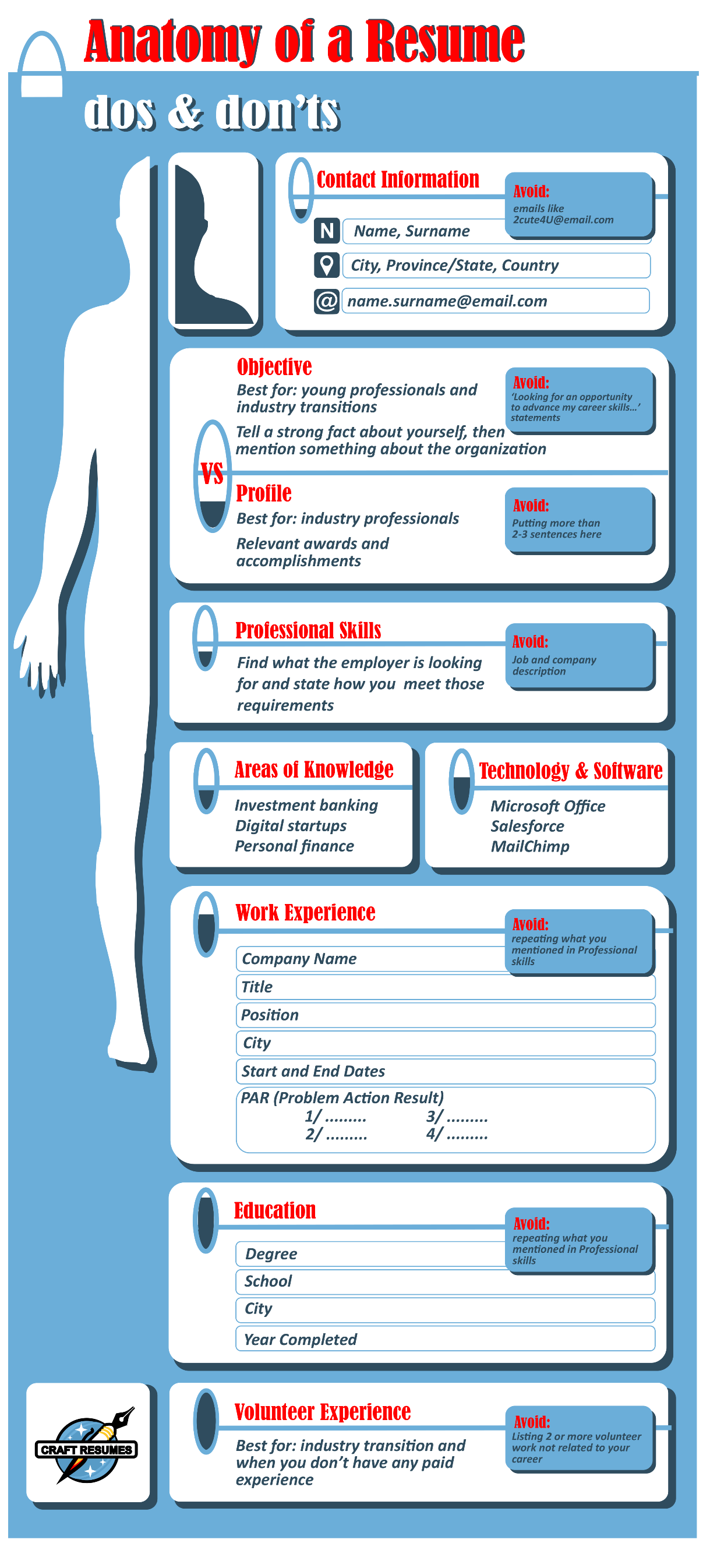
How to write the perfect resume?
Jul 05 2016
Writing a professional resume is a process that requires strategic thought and action. For some, a perfect resume can come together in a matter of hours and for some, it can take several days. There is no right or wrong as to how long it takes to write your resume, what really matters is the strategy you apply when crafting a great resume for yourself. Always keep your audience in mind, and don’t be afraid to explain to the employer why you believe in the company’s work and provide precise details of your accomplishments.

6 Resume Improvement Ideas that you can try just today
Idea #1. Include your Skype contact and LinkedIn link
Why? Providing this information will make you more accessible, which means you have a better chance of being contacted by a recruiter.
Resume section: Contact information
Idea #2. Use verbs and leadership phrases
Why? It helps demonstrate your ‘to-do’ attitude as well as works towards a resume greater score if Applicant TraCking Systems (ATS) is used.
Resume section: Profile or Objective
Idea #3. Marry the resume qualifications to the posting
Why? Direct way to show your resume is relevant to the job opening. This is how you can assist the employer by providing them with a benefit if they were to hire you.
Resume section: Summary of qualifications
Idea #4. Move Education to the top if you have less experience
Why? The rule of thumb is that if you have less experience the education should go to the top of the resume under the skills section, and if you have experience of two or more years the education can be moved to the bottom of the work experience.
Resume section: Education and Certifications
Idea #5. Use combinational resume format if have a broad skill set
Why? This format is designed to present your skills to the reader first and give them an idea of what skills you can provide in the position.
Resume section: Work history
Idea #6. Use PAR format (Problem, Action, Result)
Why? It helps you avoid generic statements. An example could be “Led a dynamic team of sales executives to effectively build a strong pipeline of clientele, which resulted in an increase of company profits of 58%.”
Resume section: Work history
Craftresumes shares best Resume Infographic with you!

Embed this infographic on your site!


